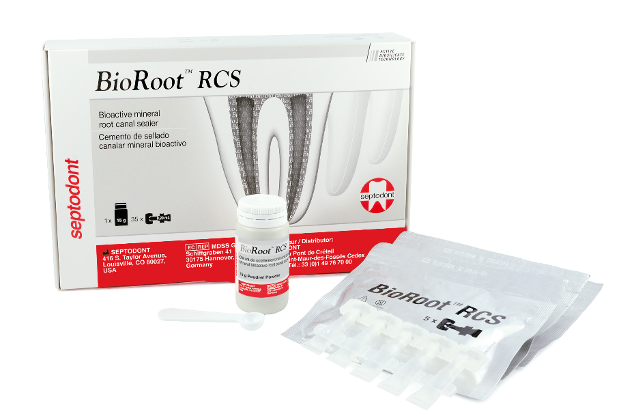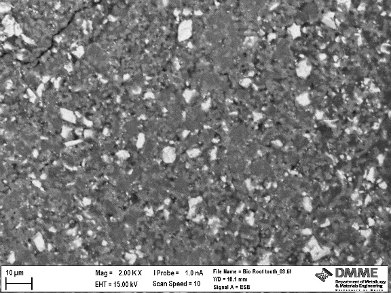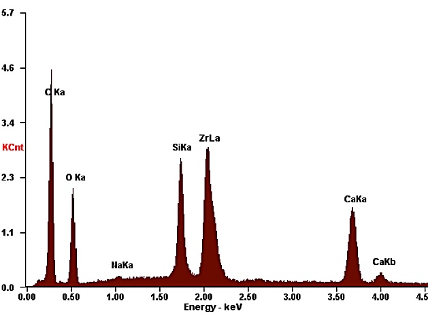
Josette Camilleri discusses the composition and properties of the use of Bioroot RCS as a root canal sealer.
Introduction
The introduction of hydraulic calcium silicate materials for use as root canal sealers was the last development of the original mineral trioxide aggregate (MTA) formulation.
The first paper reported the use of MTA as a root canal sealer in conjunction with gutta-percha. The use of MTA as a sealer resulted in the formation of mineralized tissues.
Thus, it was the first study to look into the process of biomineralisation and tissue reactions to the MTA and its calcium releasing ability. The use of MTA as a sealer resulted in higher leakage apically than guttapercha obturations.
The mechanism of action of MTA and its hydration mechanisms were reported later. This was followed by the development of commercial root canal sealers. The first ones on the market were developed in 2008 by Egeo and Angelus.
At the same time, a paper about Proroot Endo sealer developed by Dentsply was also published. However, this sealer was not released until recently on the market.
The choice of sealers available clinically to date is shown in the table below. Among these sealers is Bioroot RCS developed by Septodont. This article discusses the composition and properties of this sealer.

Composition
The Bioroot RCS is the simplest formulation as shown in the table. It is water based and the change from cement to sealer depends on the inclusion of a water soluble polymer that allows material flow.
The first use of a water soluble polymer added to Portland cement to improve the material properties was published in 2005. The use of a water soluble polymer to create a root canal sealer was reported in 2009.
In this research the various additions of polymer were investigated and their effect on the resultant material properties and hydration characteristics.
The addition of a water-soluble polymer to MTA did not alter the hydration characteristics of the material. This resulted in a material with improved properties suitable for use as endodontic sealer cement.
Showing potential
Furthermore, the novel sealer based on MTA demonstrated adequate setting time and was dimensionally stable. It had the potential to be used as root canal sealer cement in clinical practice.
The Bioroot RCS is presented in a powder and liquid format as shown in Figure 1. The powder is composed of tricalcium silicate as the active cementitious material and zirconium oxide radiopacifier.

The liquid is composed of water, calcium chloride, povidone and a water soluble polymer. The sealer microstructure and elemental analysis is shown in Figure 2A and 2C and its hydration over a period of 28 days with the formation of the calcium hydroxide is shown in Figure 3.
The elemental analysis has been corroborated in another recent study. When placed in solution, the sealer leaches high levels of calcium ions when compared to other tricalcium silicate-based sealers such as Endosequence BC sealer and MTA Fillapex.


Properties
Setting time
The final setting time of Bioroot RCS was shown to be 324 (±1) minutes which was shorter than that for AH Plus. MTA Fillapex did not set when used as a comparison to other tricalcium silicate-based root canal sealers.
The setting time of Bioroot RCS was reduced drastically on application of heat used in warm vertical compaction obturation techniques. The contact with a wet environment lengthened the setting time considerably.
In fact, the manufacturer recommends the use of Bioroot RCS with cold obturation techniques only particularly with gutta-percha in a single cone obturation technique.
Solubility
Biooot RCS was shown to be less soluble than AH Plus and MTA Fillapex immediately after immersion in water. However, its solubility was higher over time when compared to the resinbased sealers.
The solubility enhances the biological properties of the sealer. Immersion in phosphate buffered saline improved the Bioroot RCS solubility in the long term and a surface precipitate was observed after 14 and 28 days of immersion.
Flow and film thickness
Bioroot RCS exhibits a lower flow and higher film thickness than the limits specified by ISO recommendations. The ISO recommendations are intended for inert sealers unlike the Bioroot RCS.
The flow and film thickness are affected by the heat applied during the warm vertical compaction procedures. The manufacturer in fact recommends the use of cold obturation techniques.
Radiopacity
The radiopacity of Bioroot RCS was shown to be greater than the lower limit specified by ISO and similar to that of AH Plus and MTA Fillapex.
The radiopacity was shown to be about 9mm aluminium thickness. This is similar to Endosequence BC sealer and higher than for MTA Fillapex.
Calcium ion release
Bioroot RCS was shown to release high levels of calcium in solution.
This is much higher than other similar sealer types. In fact, it releases double the amount leached by Endosequence BC sealer and ten times as much as calcium ions released by MTA Fillapex for the same time periods under the same conditions.
Biomineralization and the deposition of phosphates over the material when in contact with the dentine has been shown as indicated in Figure 2B and 2D.


Biomineralisation
Contact of tricalcium silicate-based materials with dentine and tissue fluids has been reported to lead to the deposition of phosphates on the materials surface. This has been extensively described for MTA.
The interaction of dentine and Bioroot RCS has been also well documented. A chemical bond is achieved through a mineral infiltration zone at the material to tooth interface .
This property is important for sealers as bonding of the sealer to the root canal dentine will lead to less microleakage. The mineral infiltration zone has been reported for Bioroot RCS using confocal microscopy.
The mineral infiltration zone and the sealer tags ensure sealer adaption and bonding to the root canal dentine (Figure 4). The tags and mineral rich zone were more evident in the coronal portion than in mid-root and apically.
This could be caused by limited action of the ethylene diamine tetracetic acid (EDTA) irrigation and removal of the smear layer further down in the root canal.
The infiltration of phosphorus into the Bioroot RCS when this sealer is in contact with the dentine has not been proven. Surface phase analysis using grazing angle X-Ray diffractometry did not find the formation of calcium phosphate in the material in contact with dentine.
When compared to MTA Fillapex and AH Plus, Bioroot RCS showed the greatest antimicrobial activity. The root canal sealers exerted a higher antimicrobial activity when EDTA was used as final irrigant.
Unfortunately, the antimicrobial properties of the Bioroot RCS and other sealers of related chemistry including AH Plus showed a reduction in antimicrobial properties when phosphate buffered saline was used as the final irrigant during root canal therapy.

Biocompatibility
Elutions from Bioroot RCS and even direct seeding of cells over the materials showed a high degree of cell proliferation. Migration of periodontal ligament stem cells was observed to be higher with Bioroot RCS and the cells maintained their mesenchymal phenotype.
This was corroborated by another study testing the elutions from Bioroot RCS and other tricalcium silicate-based sealers together with AH Plus.
The one day material elution showed no cytotoxic effect while 48 and 72 hour extracts exhibited mild cytotoxicity. The one day elution of Bioroot RCS was also evaluated in another study and no DNA double-strand breaks were observed when compared with other resin- and silicate-based root canal sealers.
Bioroot RCS did not compromise the mineralization potential of pulpal A4 stem cells. It was not as cytotoxic as Pulp Canal Sealer which is a zinc oxide eugenol-based material.
It did not recruit the pulpal stem cells toward differentiation but preserved their osteo-odontogenic intrinsic properties. Bioroot RCS also showed less toxic effects on periodontal ligament cells than Pulp Canal Sealer and induced a higher secretion of angiogenic and osteogenic growth factors than Pulp Canal Sealer.
Obturation with Bioroot RCS
Bioroot RCS was affected by the irrigation protocol used. Using EDTA as the final irrigant led to the reduction of calcium releasing ability by half.
Furthermore, in contact with dentine the calcium phosphate phase was not formed when EDTA was used as final irrigantas shown in Figure 5 which compared the crystalline phases formed after using saline or EDTA as the final irrigating solution prior to obturation with Bioroot RCS.

Irrigation with EDTA showed the highest antimicrobial properties for Bioroot RCS. The antimicrobial activity of Bioroot RCS was significantly higher than that of MTA Fillapex and AH Plus.
Bioroot RCS showed the greatest antimicrobial activity and this was enhanced by using EDTA irrigating solution. The use of phosphate-rich irrigating solutions is contraindicated with Bioroot RCS and all tricalcium silicate-based sealers.
Application of heat during warm vertical compaction affects the flow and film thickness of the Bioroot RCS. Thus, this sealer is recommended for use with single cone techniques or lateral condensed gutta-percha. The choice of sealer should be considered when selecting the obturation technique.
The manufacturer recommends the use of single cone obturation technique with Bioroot RCS since this sealer is antimicrobial. Thus, its presence would potentially eliminate any microorganisms left inside the root canal space and in the dentinal tubules.
Its high antimicrobial activity is evident and it is still effective whatever the irrigating regime used.
The retreatability of Bioroot RCS sealer used in conjunction with gutta-percha in single cone obturation technique was better compared to AH Plus as less sealer remnants and shorter retreatment times were observed.
Conclusion
Bioroot RCS should be used in conjunction with a solid cone in any cold obturation technique. The material solubility enhances the reaction of the material with environmental ionic exchange thus favouring a biological response.
The Bioroot RCS is highly antimicrobial and the use of EDTA enhances its antimicrobial activity. This sealer was not developed to conform to the classical recommendations of hermetic seal. Instead, it aims to create an environment within the root canal that enhances biological activity and maintains antimicrobial activity.
Thus, a paradigm shift is possible with Bioroot RCS.
Contact [email protected] for references.
For more information, visit www.septodont.co.uk.


